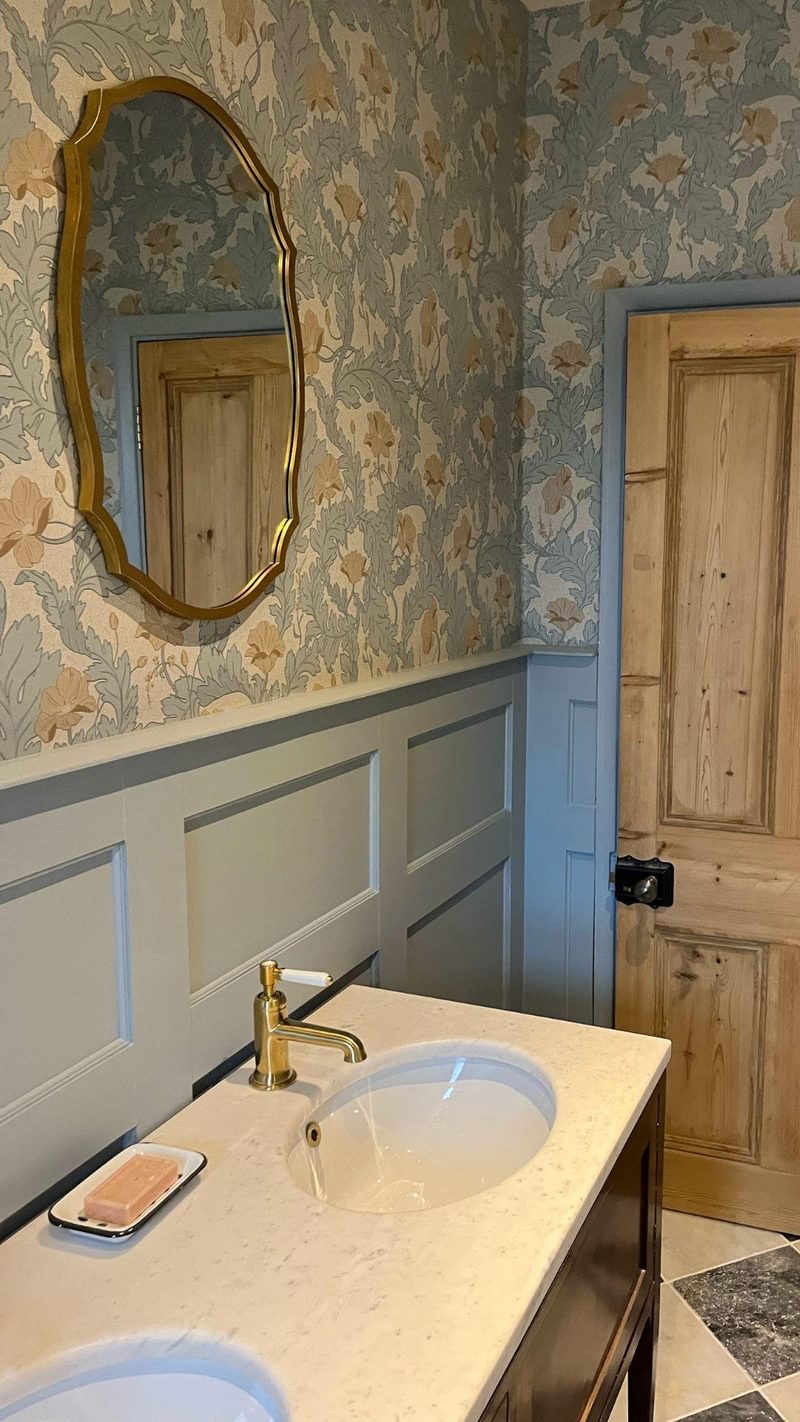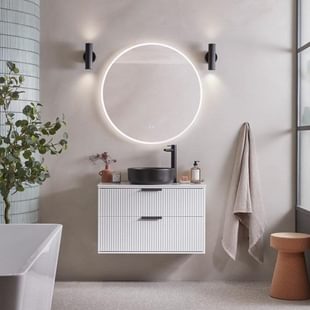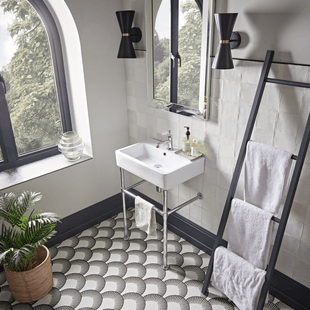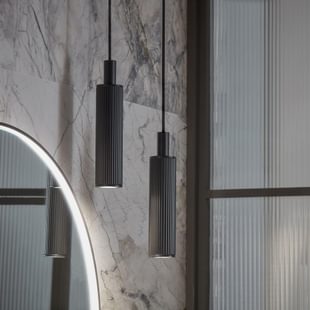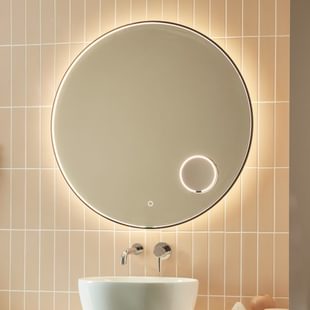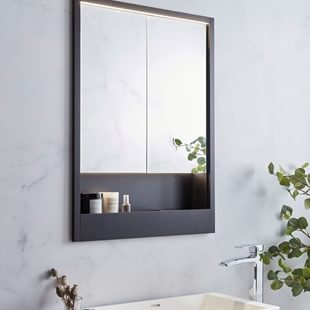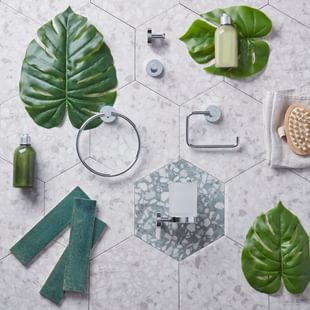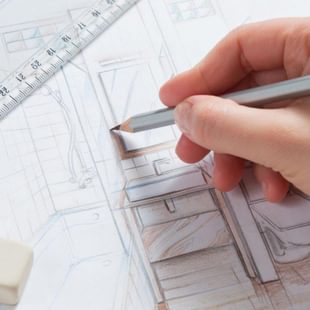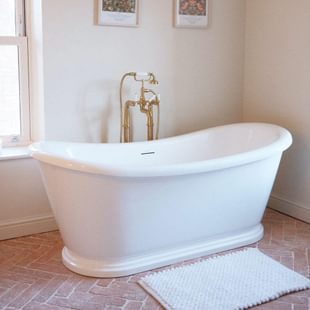- NEW
- Bathroom Furniture
- Baths
-
Basins & WCs
Basin & WC Styles
-
Taps
TAP TYPESTAP STYLES
- Showers
-
Lighting
Smart Lighting Solutions
-
Mirrors
-
Cabinets
Cabinet TypesCabinet Styles
-
Accessories
Accessory Types
-
Guides & Ideas
Inspiration
- NEW
- Bathroom Furniture
- Baths
-
Basins & WCs
Basin & WC Styles
-
Taps
TAP TYPESTAP STYLES
- Showers
-
Lighting
Smart Lighting Solutions
-
Mirrors
-
Cabinets
Cabinet TypesCabinet Styles
-
Accessories
Accessory Types
-
Guides & Ideas
Inspiration
Get ready to be inspired
If you’re looking for some bathroom ideas, but don’t know where to start, we have some fantastic examples of our customers’ projects from start to finish. Whether you’re updating to a more modern bathroom or renovating an existing space, we have stories to inspire your new bathroom journey.
This is part one of our four part guide, for more information on each stage please use our navigation banner below.

First steps
Everyone starts at a different point, and colour is a very valid first step for many. A bold shade can bring personality, warmth and comfort to a space, instantly evoking an emotional response.
If you’re looking for some more traditional colours, greens and blues can bring calmness and peace, where as pinks are friendly and reassuring. Orange and yellow can bring energy into a space, with blacks and brown introducing a more sophisticated or adult sensibility.
It's worth using a colour swatch as a reference, so you can line up complimentary colours. This means you'll be able to easily identify some accent colours for accessories or artwork, and really make the space pop.
A great place to start is the Real Bathrooms section of our website. It's full of inspiring designs from our customers, showing how inventive and creative you can be with a wide range of shapes, sizes and styles of bathrooms.
Why You Should Create a Moodboard for Your Bathroom Renovation
Renovating a bathroom can be exciting—but also overwhelming. With countless design choices, materials and styles available, it’s easy to lose sight of your vision. That’s where a moodboard comes in. A moodboard is a curated collection of images, textures, colours, and ideas that visually represents the look and feel you want to achieve. It’s a powerful tool that brings clarity, saves time, and helps you make confident design decisions.
One of the main benefits of creating a moodboard is focus. Rather than being distracted by every trend or tile sample you see, your moodboard acts as a visual anchor, keeping your ideas consistent and cohesive. It also helps you communicate your vision clearly—whether to a designer, contractor, or partner—minimising misunderstandings and ensuring everyone is on the same page.



To create a moodboard, start by gathering inspiration. Browse interior design websites, magazines, Pinterest, or Instagram, and save images that resonate with you. Look for colours, tile patterns, fixtures, lighting, and layout ideas. Once you have a collection, group images that share a common tone or style. You can build your board digitally using tools like Canva or Pinterest, or physically with printed images and material samples.
Be sure to include key elements such as your preferred colour palette, floor and wall tiles, vanity style, lighting choices, and any accessories you love. Don’t be afraid to edit—remove anything that doesn’t fit the overall feel.
A well-crafted moodboard gives you a clear direction and boosts your confidence throughout the renovation process. It turns abstract ideas into a visual plan—helping you transform your bathroom into a space that’s both beautiful and uniquely yours.

Inspiring Bathroom Trends
Checking the latest trends—like those highlighted in the Roper Rhodes Bathroom Trends Guide 2025—can be incredibly valuable when redefining your bathroom’s aesthetic.
You can discover current palettes, innovative materials, and unexpected combinations that elevate everyday spaces. This ensures your renovation doesn’t just look good today, but remains stylish and functional in the years to come. Plus, integrating contemporary inspirations—whether bold hues, textured surfaces, or multifunctional fixtures—helps spark creative ideas that align with your personal taste while keeping your design fresh, compelling, and future‑ready.
For example, the dark and stormy trend mixes deep tones such as burgundy and oxblood with marble and dark woods, creating a luxurious, mature space.
If you're looking for real life examples of people following these trends, you’ll find a variety of styles, layouts, and finishing touches in our Real Bathrooms gallery. Our gallery features bathrooms of all sizes, so you can discover ideas that work for both compact rooms and spacious suites.
Bathroom Layout and Fixtures
The layout and choice of fixtures are central to creating a bathroom that’s both beautiful and functional. Start by considering how you want to use the space—do you need a double vanity for busy mornings, or would a single sink free up more room for storage? The right bathroom suite, including your toilet, bath, and shower, should complement the overall style of the room while meeting your practical needs. Wall tiles and floor tiles can dramatically influence the atmosphere, so think about the colours, patterns, and materials that will best suit your vision.
Don’t overlook the importance of lighting; wall lamps and ceiling lights can be layered to create a bright, welcoming environment, while maximizing natural light with well-placed windows or skylights can make the whole room feel more spacious. With thoughtful planning, your bathroom layout and fixtures will work together to create a space that’s both stylish and comfortable.
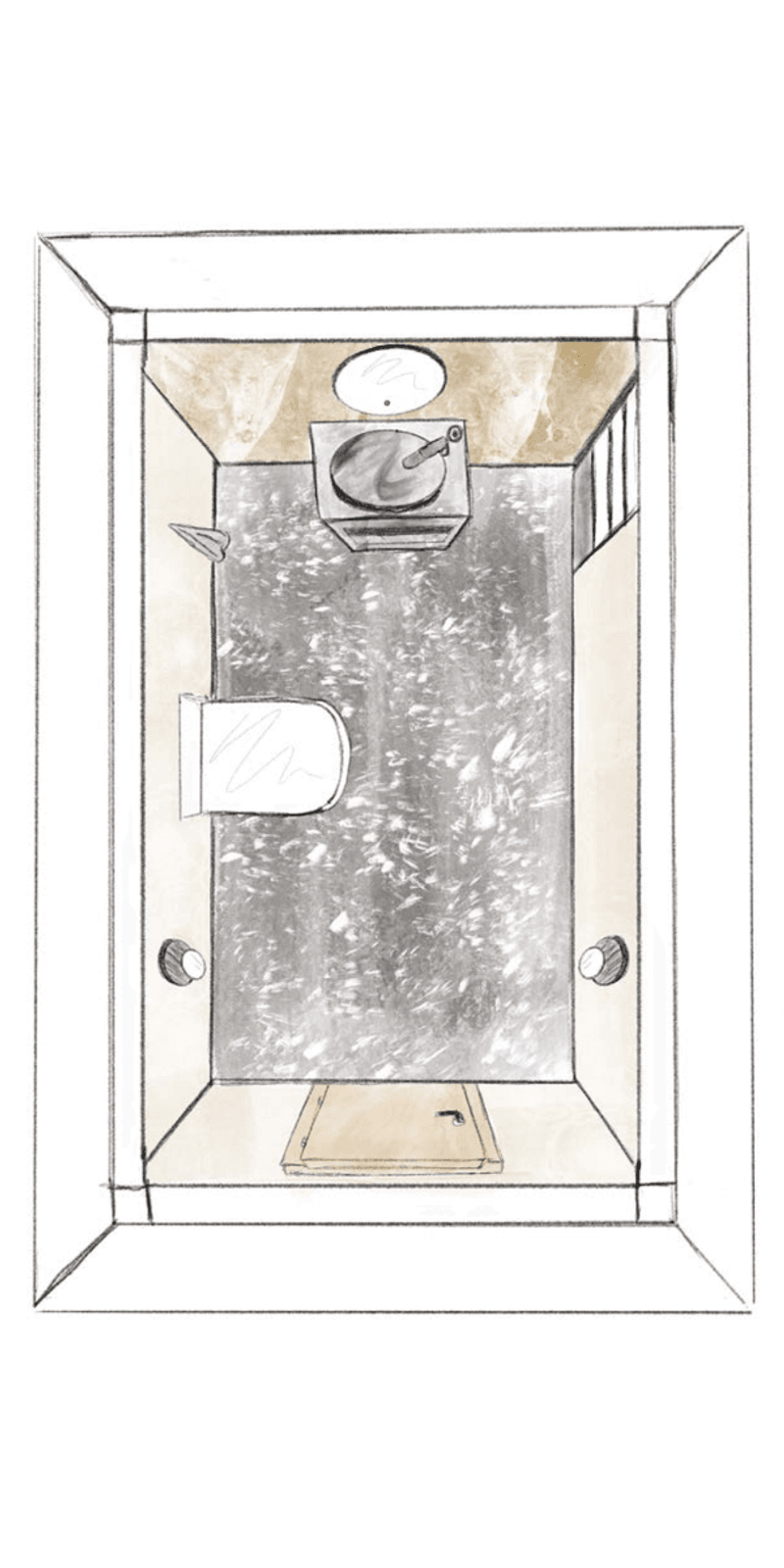
Inspiration from the Hollies
Dawn from @the_hollies_1
"I wanted to create a luxurious ensuite with brass accessories and calming tones. We used this bathroom everyday so I needed it to be spacious and perfectly styled for two adults with double basins and large cabinetry offering plenty of storage."
Choosing your wall and floor tiles
Surfaces, and how they effect the space and combine with your colour choice, is an important element of your new bathroom project. From a practical perspective, your bathroom will be home to a high degree of humidity, creating large amounts of moisture on your surfaces. This means the floor, walls and any furniture must be able to withstand this. It is essential to use waterproof materials for bathroom walls, such as plasterboard, to ensure durability and moisture resistance.
When preparing and installing surfaces, keep in mind that brick walls, which may be part of the existing structure, require different handling compared to other wall types like timber studs or sheeted walls.
For flooring, tiles are a safe option and a key consideration in bathroom design. There are various flooring materials available, such as porcelain, terrazzo, and wood-like tiles, each offering different aesthetics and levels of durability suitable for bathrooms. Ceramic tiles are more affordable, easier to install and come in a wide variety of colours, whereas porcelain is typically more expensive and requires professional installation, but is harder wearing.
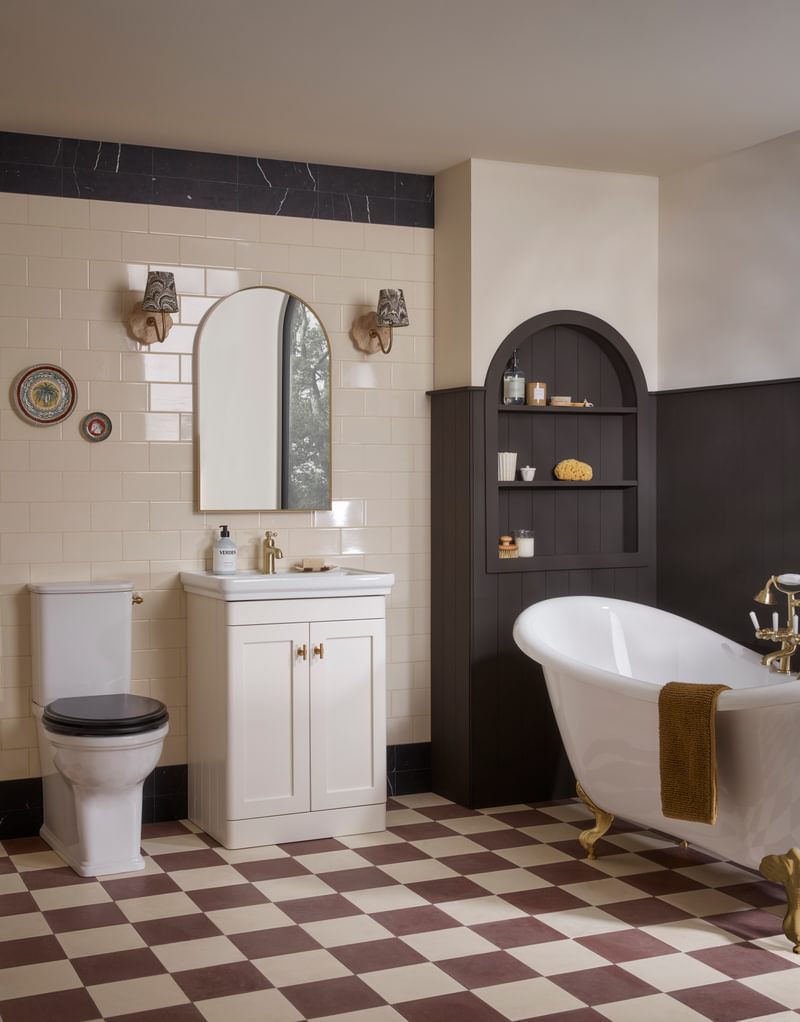
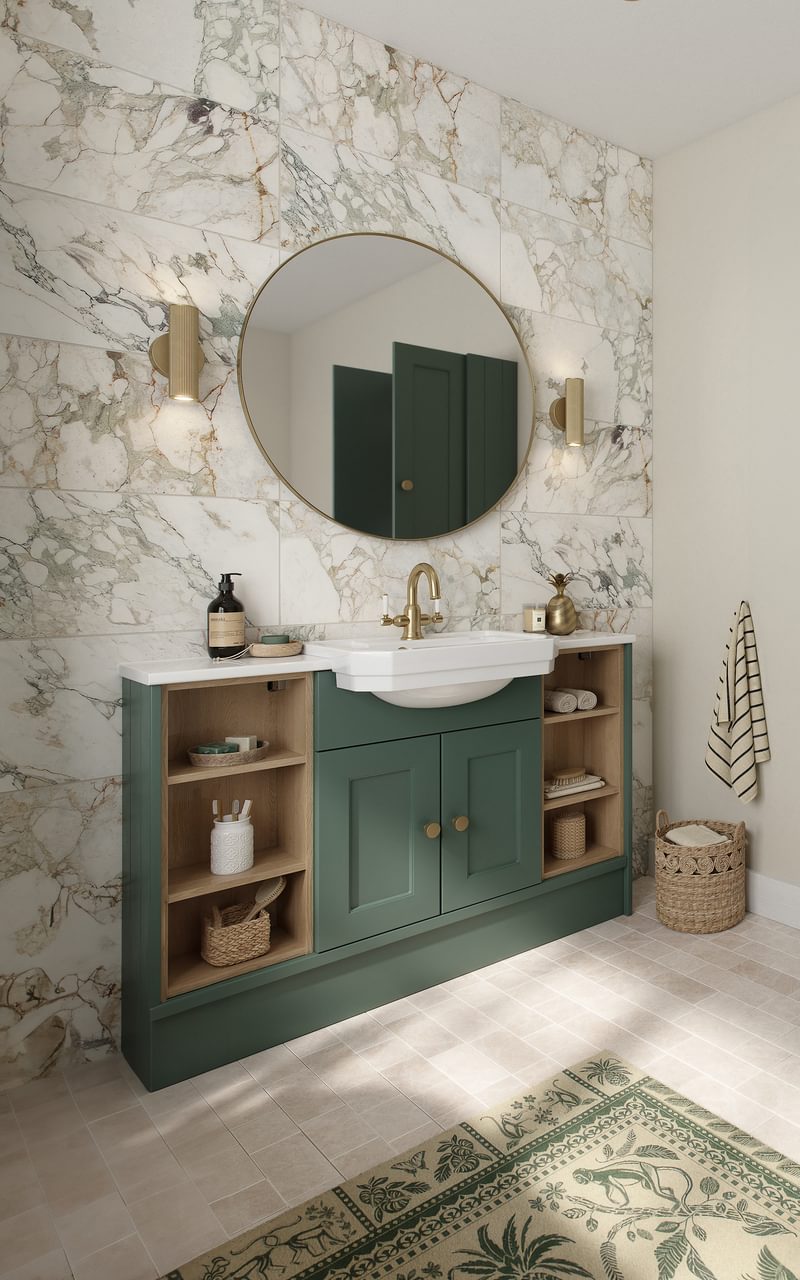
Beyond the material itself, tile selection and installation is crucial for both wall and floor surfaces in the bathroom. Tiles offer a range of finishes as well. Beyond the typical matte and gloss, or polished, there are both textured and natural finishes. Similar to the tiles themselves, not all are suited to being used on the floor or even in a bathroom, so it’s worth checking with your supplier before committing to a finish.
Laminate is available in a wide variety of colours and styles, and can be very easy to install, but is usually less durable than tiles showing scratches and scuffs. Wall coverings, such as waterproof paint and wall tiles, should be chosen for their durability in high humidity areas to ensure long-lasting protection.
When it comes to painting bathroom surfaces, it is important to properly prepare the walls and select paints specifically designed for humid environments to prevent peeling and mould growth.
Paint or wallpaper?
Paint and wallpaper can be used on the walls, but again the moisture and humidity should be considered. Wallpaper, for example, can offer some eye-catching patterns and illustrations. The only potential drawback is that supplemental ventilation, such an extractor fan, may be needed to insure longevity.
There are huge amounts of suitable paint options, in a wide range of colours, but bear in mind you’ll likely need to touch up the paint after 3-5 years. When choosing paints, it's important to select high-quality paints specifically designed for bathrooms, such as kitchen and bathroom paints, to ensure durability and proper colour matching. Both wallpaper and paint tend to be less durable than tiles as well, being less resistant to spills.
Bathroom wallpaper is available, and is specially designed to resist moisture, heat, and humidity. Unlike regular wallpaper, it often uses vinyl or water-resistant coatings to prevent peeling and mold. These materials make it suitable for steamy environments, maintaining durability and aesthetic appeal even near sinks or bathtubs.
Another idea is to use wallpaper or paints to create a unique feature wall or to experiment with bold patterns as a creative bathroom idea.
